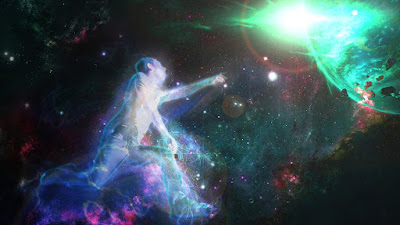Wow, I just had a look at Sci-Fi and Fantasy sub-categories of ebooks on amazon.com, and guess which ones are by far the biggest, with over 13,000 titles? Dystopian and Post-Apocalyptic! Not that I'm surprised, mind you, with all the TV shows and movies with those themes, not to mention even the daily news in the real world! But it made me stop and think about how I've been describing my book to people.
You see, my Rhuna series is set in mystical Atlantis, which was said to be a Utopian society, the definition of Utopia being "a community or society possessing highly desirable or near-perfect qualities." That's the setting I've used, but of course, writing about a perfect world would just be boring, so I add characters who go against those idyllic rules and lifestyles to create conflict.
The idea is to show that there is no such thing as a perfect society, even if it appears to be so on most levels. There will always be some people and some issues that don't fit, and that's where rebellion starts.
But Rhuna is still living in an overall peaceful, idyllic world, thanks to the rulers of Atlantis.
There is no "Utopia" category at amazon.com, and doing a search for "utopia" gets you all kinds of things, but try "Dystopian", and there are thousands and thousands of books, images and other things. Why does Dystopia have so much more appeal than Utopia? Because, I mean, you'd think it would be the other way around, wouldn't you? Don't people prefer pictures of paradise instead of a post-apocalyptic ruin of a city?
There are probably many reasons and topics you could philosophize over (and please do share any thoughts you may have in the comments below!) but my main concern now is whether a utopian theme in books would fare well in such an environment as we have right now?
Is Dystopia only popular now because some books, movies and TV shows were hits, and that started a fad? Are people reading Dystopia because there's no real alternative (except for my books, perhaps?!)
I read somewhere that readers think a utopian setting is political propaganda of some sort, which might be the case if the book is not Fantasy or Sci-Fi, and so far, no reader or reviewer has had anything negative to say about the utopian setting of my books.
Far from being political or propaganda, however, I do admit to making social commentary in my books, merely by bringing up age-old issues that still have relevance today, or that the reader can relate to, even though two books are set in Ancient Egypt, for example. (see Rhuna: Crossroads and Rhuna, The Star Child)
My hope is that readers will find some thoughts about human society and ways of governing as described in Rhuna refreshing, stimulating and worthy of deeper consideration. So, tell me what you think!






















